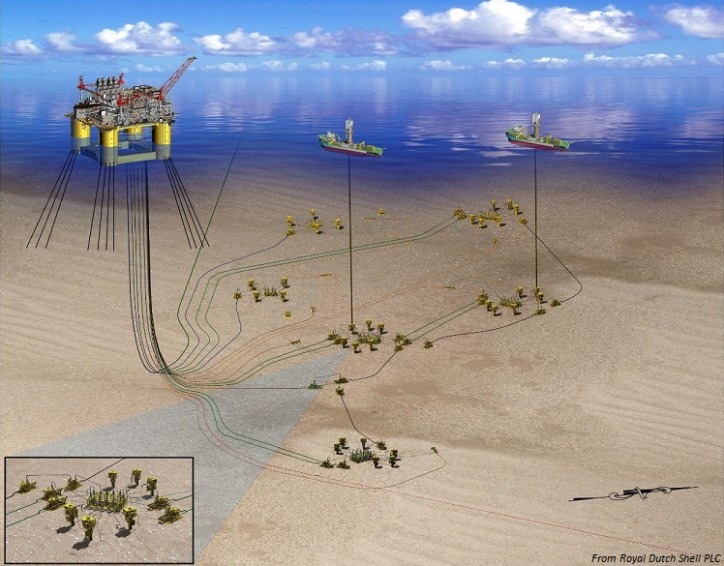 Shell O.K.-ed the building and installation of its biggest floating platform in Mexico’s Gulf.
Shell O.K.-ed the building and installation of its biggest floating platform in Mexico’s Gulf.
The Appomattox deepwater oil and gas field is situated 89 miles offshore in Louisiana and expectations are for production to reach roughly 175,000 barrels of oil equivalent (boe) on a daily basis. Once up and going, the field might contribute for boosting the company’s production in the said region by over 60% when compared to the levels from 2014.
“We’ve managed to once again deliver a globally competitive investment scope that is to serve the purposes of a significant deep-water project,” commented Shell Upstream Americas Director, Marvin Odum.
“Appomattox gives us far more room to produce in the Mexican Gulf, where we recorded production levels of approximately 225,000 boe daily in 2014, and this current development is going to be lucrative for many years to come. Given its competitive cost coupled with its excellent design, it is only natural that Appomattox serves as the next proud entry in our series of deep-water success stories.”
The development host of the Appomattox is going to feature a subsea system with six drill centers, a semi-submersible, four-column production host platform, 5 water injection wells and 15 producing wells.
Shell commented that it has been able to reduce the project’s total expenditure by 20% by improving the design and making a number of cost reductions, thus bringing the vessel’s breakeven price to approximately USD 55 per a single barrel unit of oil equivalent.
The sanctioned project features capital appointed for the purposes of developing 650 million of boe resources at Vicksburg and Appomattox, with estimations for the start-up leaning towards this decade’s end.
Shell Pipeline Company LP also underwent the making of an important and final investment decision regarding the Mattox Pipeline, which is a corridor pipeline of 24 inches that is going to transport crude oil from the Appomattox host to an offshore structure that is to be located in the South Pass area and then establish a connection onshore via an existing pipeline.
At the moment, Shell has a 79% stake in the project and the Chinese CNOOC’s wholly owned subsidiary of Nexen Petroleum has the other 21%.
The reasons behind the decision of pouring billions of dollars into the project are that companies have already cut other mega-projects of approximately USD 200 billion due to the downward oil price trend that started last year.
Shell has been operating in the Mexican Gulf for more than 60 years. The region is responsible for contributing roughly 17% of the USA’s total crude oil production, as reported by the Energy Information Administration. It was also the location of the worst offshore oil spillage in the country’s history, regarding the 2010 incident with BP’s Deepwater Horizon well.
By making this investment Shell displays that it is betting strong on deep water in an effort to finalize by early next year Britain’s BG Group’s acquisition that amounts to USD 70 billion. The latter holds the biggest stakes in the offshore oil production sector in Brazil.
In 2014, Shell began production from the Mars B development in the Mexican Gulf. The company is also currently busy with the development of its Stones project.
At 02:00 PM company shares were being traded for 1.4% higher at a level of 1.811 GBP per single share.
Among the few projects that have received approval by oil companies in 2015 so far, in February the Norwegian Statoil O.K.-ed the development of the USD 29-billion North Sea Johan Sverdrup offshore field by the year 2019.